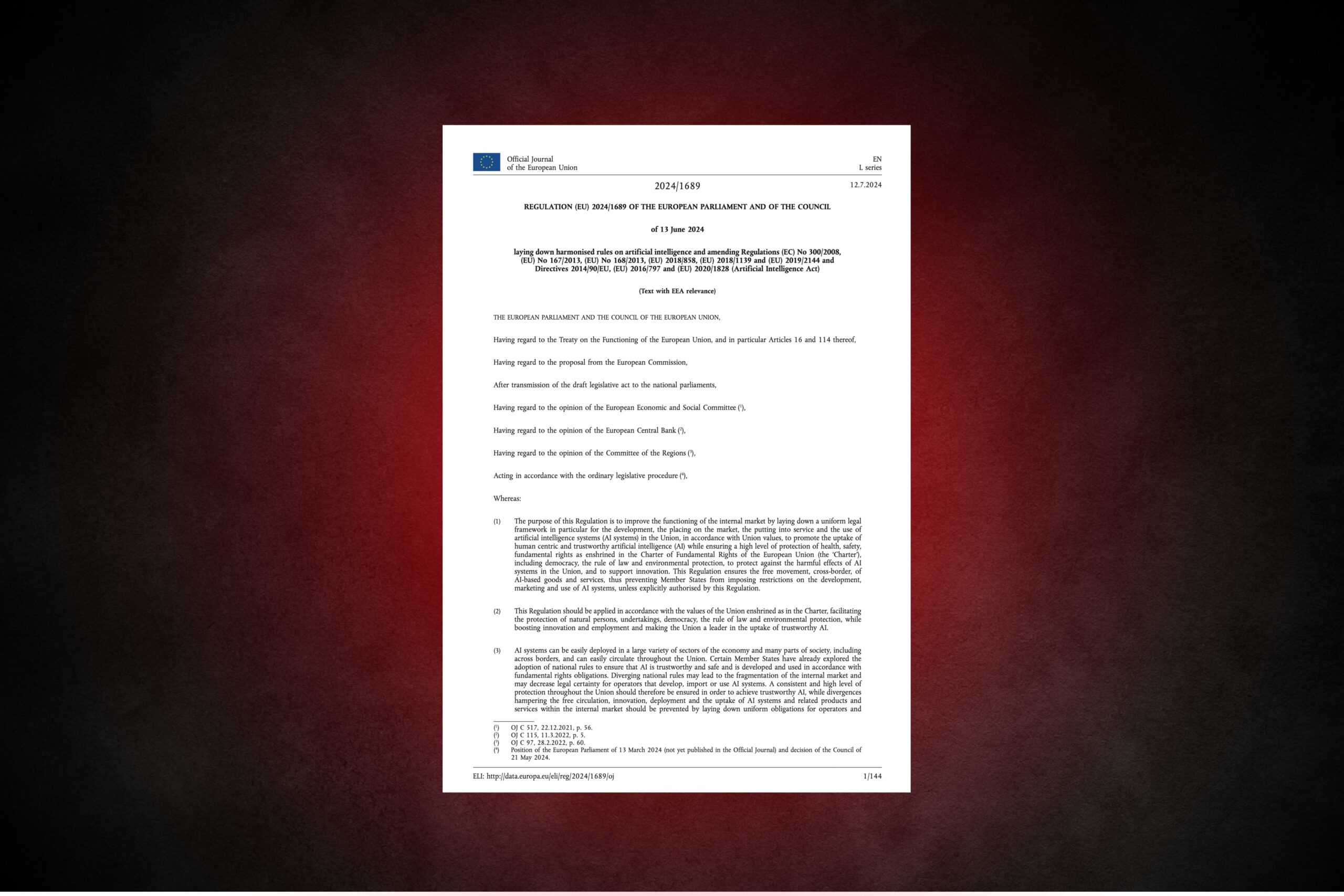Welcome to the Antitrust Antidote—a quarterly publication analyzing significant U.S. antitrust decisions from legal and economic perspectives. Authored by former Federal Trade Commission (FTC) enforcer Koren W. Wong-Ervin with former FTC economist co-authors Jeremy Sandford and Nathan Wilson, alternating each quarter. The title of this series, “Antitrust Antidote,” while mostly meant to be humorous (perhaps limited to those who have heard Koren’s “Let’s talk economics” as a cure for a bad day), also refers to the practical guidance we aim to provide throughout the series. We hope you enjoy it![1]
***
There were a number of decisions from January through March 2025, including (1) a motion to dismiss the decision in the Apple iCloud case involving issues such as “negative tying” arrangements, single-brand aftermarkets, and statute of limitations; (2) the FTC’s loss in the vertical merger of Tempur Sealy/Mattress Firm; and (3) the Ninth Circuit’s decision rejecting a group of private class plaintiffs’ attempt to use state law to avoid the court’s earlier ruling in favor of Qualcomm in the FTC’s failed suit.
Gamboa v Apple (N.D.Cal Feb. 28, 2025)
A California federal district court dismissed with leave to amend a suit brought by two iCloud subscribers who sought to represent a nationwide class of consumers who allegedly overpaid for iCloud due to Apple’s restrictions that prevent third-party cloud storage providers from accessing certain “Restricted Files” on iPhones and iPads. Plaintiffs allege that the restriction is “significant” for consumers because the Restricted Files are ones that “allow users to effectively restore the look and feel of their device—i.e., reinstall apps and device settings—after a factory reset or when they purchase a new device.” According to Plaintiffs, the file restriction gives iCloud “an enormous structural advantage” and prevents competitors from offering “full-service” cloud storage that can compete effectively with iCloud.
Plaintiffs allege three theories of harm: that Apple (1) unlawfully ties its mobile devices (the tying good) to cloud storage (the tied good); (2) monopolized or attempted to monopolize the market for cloud storage on Apple mobile devices; and (3) violated California’s Unfair Competition Law.
Tying
The court rejected the Plaintiffs’ Sherman Act Section 1 tying claim on numerous grounds.
First, the court stated that the tying claim “fails at the outset because Plaintiffs do not allege concerted conduct.” In support, the court pointed to Plaintiffs’ allegations that “[w]hen consumers purchase an Apple mobile device, they are nowhere advised that iCloud is the only cloud service capable of storing or backing up Restricted Files on their device,” and they “learn of this limitation only after they have purchased their mobile device.” The court concluded: “Thus, as alleged, Apple unilaterally decided to restrict access to certain files and imposed this restriction on buyers without their knowledge or acquiescence.”
Second, the tying claim also failed “for lack of a tying arrangement because the complaint does not plausibly allege that Apple conditions the sale of its mobile devices on buyers’ agreement to purchase iCloud from Apple (a “positive” tie) or on their agreement not to purchase cloud storage from Apple’s rivals (a “negative” tie). The court stated that there was “no coercion” yet did not address the Plaintiffs’ allegations regarding the significance to consumers of having access to the Restricted Files. Instead, the court concluded that, based on the allegations, “Apple device buyers are free to: (1) purchase iCloud, (2) purchase cloud storage from Apple’s rivals, or (3) choose not to purchase cloud storage at all.”
Monopolization & Market Definition
The court rejected Plaintiffs’ Sherman Act Section 2 monopolization and attempted monopolization claim for failure to allege a relevant product market or monopoly power. Plaintiffs alleged two markets: (1) “an extremely narrow” market for “full-service” cloud storage on Apple mobile devices—that is, “cloud platforms that can host all file types”; and (2) in the alternative, a broader market for all cloud storage on Apple mobile devices. Apple focused on the first product market and challenged the second broader market.
The court concluded the “market cannot be limited to a single-brand product (iCloud) because non-Apple storage offerings work on Apple devices. Plaintiffs allege that iCloud has one feature (storing restricted files) that some unknown subset of Apple device users value. But the complaint lacks any plausible allegation that Apple device users value this single feature so much that it distinguishes iCloud from all other cloud storage options.”
The court also found implausible Plaintiffs’ “so-called ‘SSNIP test.’” Plaintiffs alleged that Apple “substantially increased the price of iCloud in the UK and other regions (outside the US),” and thus iCloud is its own product market. The court concluded that this argument has a “host of deficiencies”:
First, the Plaintiffs do not allege that iCloud’s price increased relative to other products in the market, which is a necessary condition for an SSNIP test. If the price of iCloud increased, but at the same time all other cloud storage services increased their prices comparably (e.g., due to a market-wide cost increase), the fact that consumers did not change their purchasing behavior tells us nothing about substitutability because the relative prices have not changed.
Second, the price change was imposed in “the UK and other regions,” but here the relevant geographic market is the United States. Plaintiffs do not allege any facts to establish that even a valid SSNIP test conducted in the UK would apply to the United States geographic market.
Finally, an SSNIP test requires a profitable price increase, but the Plaintiffs do not allege that the price change in the UK was profitable. Instead, they ask the Court to infer this fact based on the conclusory allegation that “[b]y all accounts, Apple has been able to retain these substantial price hikes.”
The court was correct in that the hypothetical monopolist test thought experiment involves an SSNIP on the price of in-market products, holding all else constant. If prices of comparable goods not part of the alleged market increased concurrent with increases in the price of iCloud, then it is difficult to draw conclusions as to product substitutability from the iCloud price increase.
While it is possible that competitive conditions in the U.K. are sufficiently similar to those in the U.S. that observing an SSNIP in the U.K. could inform an analysis of U.S. substitution, this would need to be demonstrated, and not just assumed. Evidence of this similarity could include, for example, both geographies having the same set of competitors with similar shares. If, for instance, a rival cloud service provider were popular in the U.S. but not in the U.K., Apple may face more elastic demand in the U.S. than in the U.K., making it difficult to draw inferences about U.S. demand from U.K. data.
Finally, while it is true that the hypothetical monopolist test envisions a profitable price increase, economists commonly infer profitability from the actions of firms, as firms are unlikely to take actions that would lower profits. Plaintiffs appear to have argued that Apple would have reversed the U.K. price increases were they not profitable, which is consistent with economic theory. Plaintiffs perhaps could have bolstered this claim with empirical evidence, for example, evidence that profit per U.K. consumer increased following the price increase.
Statute of Limitations
The court denied Apple’s motion to dismiss all claims as time-barred, stating that “[t]he timing of Apple’s file restriction, and the details of how it is implemented, are not sufficiently clear from the face of the complaint.” Apple’s argument was that the Plaintiffs’ claims were time-barred because the Plaintiffs “challenge a design decision that Apple implemented nearly 15 years ago—in 2011—when iCloud first launched.” The court dismissed this argument on the grounds that, “as Apple acknowledges, the complaint ‘omit[s] the date Apple implemented’ its decision to restrict files from cloud storage rivals.” Plus, the complaint alleges that Apple maintains an illegal monopoly through ongoing enforcement of its file restrictions, which, according to the court “may constitute a continuing violation of the Sherman Act.”
FTC v Tempur Sealy/Mattress Firm (S.D. Texas Feb. 26, 2025)
A district court denied the FTC’s motion for a preliminary injunction against the merger of Tempur Sealy, a mattress manufacturer that sells primarily at wholesale to mattress retailers, and Mattress Firm, a mattress retailer with 2,300 physical stores across the U.S., selling mattresses made by Tempur Sealy, Serta Simons, and Purple. In so doing, the court relied heavily on the parties’ economic expert, Dr. Mark Israel.
Tempur rival Serta’s CEO testified that the merger was an “existential threat” to Serta because a Tempur-owned Mattress Firm could remove Serta mattresses altogether. However, Serta projected to a bankruptcy court that its sales would grow by 5% over five years if the merger closed, including through sales growth at Mattress Firm, projections that did not change following the announcement of the merger. The court cited these projections in dismissing the Serta CEO’s testimony as unpersuasive and further determined that Serta’s lack of credibility in asserting foreclosure extended to other Tempur rivals that testified.
The FTC alleged a market for premium mattresses, i.e., those costing more than $2,000. The court found the FTC’s asserted Brown Shoe characteristics unpersuasive, finding that: (1) industry participants recognized a variety of price cutoffs for “premium” mattresses; (2) “premium” mattresses lacked distinct features (e.g. because the same mattress could be above or below $2,000 depending on which retailer was selling it); (3) customers commonly compare mattresses priced both above and below $2,000; (4) the FTC’s evidence of different price elasticity was “sparing” and “anecdotal”; and (5) mattresses above $2,000 are sold through the same outlets as those priced below $2,000.
The FTC also put forward a hypothetical monopolist test (HMT), calculating aggregate diversion within mattresses priced above $2,000 by reference to a 2017 incident in which Tempur Sealy was excluded from Mattress Firm; per the FTC, Mattress firm retained 72% of its sales during this incident, implying a 43% aggregate diversion ratio and thus satisfying the HMT. The court found the FTC’s analysis unpersuasive, in part because the 2017 incident appeared to be contemporaneous with increased advertising and consumer interest in $2,000+ mattresses, which drove substitution to premium mattresses for reasons irrelevant to the FTC’s HMT, and which was not fully accounted for in the FTC’s analysis.
The court found that the combined firm had the ability to harm competition by foreclosing Serta or other rivals from Mattress Firm’s stores, citing Mattress Firm’s banishment of Tempur from its stores in 2017. The court also found that the combined firm would have an incentive to favor Tempur sales, up to and including removing rival brands from Mattress Firm, citing ordinary course documents and investor statements contemplating increasing Tempur’s share at Mattress Firm and recognizing Serta and Purple as important rivals.
The FTC attempted to quantify the effect of foreclosure through the testimony of its economic expert, whose model predicted the merger would result in price increases of premium mattresses of at least several percentage points, resulting in hundreds of millions of dollars in consumer harm. However, in apparent consistency with its 2023 Merger Guidelines, the FTC assumed away beneficial effects that would result from the elimination of double marginalization, i.e., the incentive of the combined firm not to charge itself a retail margin (as when Tempur sells to an independent Mattress Firm at wholesale, who then imposes a markup). Specifically, the FTC appears to have assumed that retail prices amount to a fixed percentage markup over wholesale prices, including for the combined firm. The court also noted as persuasive evidence that rival retailers and foreclosed mattress suppliers would respond by lowering prices to better compete with Mattress Firm, a possibility that the court found to be inadequately considered by the FTC’s model. For instance, the court noted that many successful suppliers of mattresses priced at or above $2,000 do not sell through Mattress Firm.
The court further noted that “premium” mattresses sold through Mattress Firm account for just 25.1% of all such mattresses, with Tempur mattresses comprising two-thirds of that amount. This meant that rival mattresses sold through Mattress Firm—i.e., those potentially subject to foreclosure—constitute only 8.8% of premium mattresses. The court found the FTC’s predictions to be predicated, at least in part, on a notion that rivals have nowhere else to turn, when, per the court, they could sell through outlets other than Mattress Firm which comprise three-quarters of all premium mattress sales. Indeed, the court found that Tempur’s relative success during its 2017 exclusion from Mattress Firm demonstrated that Mattress Firm is not a critical sales channel. The court further concluded that competition was not harmed by the 2017 incident, given that prices did not increase.
The court appeared to take some comfort from the parties’ remedial commitments, including the divestiture of 185 stores to Mattress Warehouse and reserving a certain percentage of premium mattresses sold through Mattress Firm for rival brands over the next five years, given the commitments were “certain.”
Ultimately, the court concluded that “vertical integration ‘virtually never poses a threat to competition when undertaken unilaterally and in a competitive market.’” In a nutshell, because non-Tempur sales through Mattress Firm comprise a relatively small part of the FTC’s stated market, and because past foreclosure incidents had not appeared to harm competition, the court was unpersuaded that the acquisition would materially harm competition. The court also noted the importance of EDM to merger outcomes, which has the potential to materially lower the prices of Tempur mattresses sold through Mattress Firm stores.
Key et al. v Qualcomm (9th Cir. Feb. 25, 2025)
Following the Federal Trade Commission’s 2020 loss in its monopolization case against Qualcomm, private plaintiffs in a consolidated class action pivoted to state law claims under modified theories of harm. The Ninth Circuit held that “Plaintiffs’ (California) state law claims—even as modified—fail” “for many of the same reasons” as the FTC’s case under federal antitrust law failed, noting that Qualcomm “has asserted its economic muscle ‘with vigor, imagination, devotion, and ingenuity.’” The court stated that “‘there would have to be some extraordinary difference’ between state and federal law for Plaintiffs’ claims not to ‘fail as a matter of law,’” and that “Plaintiffs fail[ed] to show such differences.”
Plaintiffs (like the FTC) challenged: (1) Qualcomm’s “no license, no chips” policy, under which Qualcomm refuses to sell modem chips to cellular manufacturers that do not take licenses to practice Qualcomm’s patents, and (2) Qualcomm’s alleged exclusive dealing agreements with major device manufacturers Apple and Samsung. The plaintiffs’ theories of harm differed from the FTC case’s “anticompetitive surcharge” theory of harm, which the Ninth Circuit rejected in its 2020 decision in FTC v Qualcomm. Instead, the private class Plaintiffs alleged that Qualcomm’s “no license, no chips” policy amounted to an unlawful refusal to deal with rival chip makers and an anticompetitive tying arrangement, with the tying product being Qualcomm’s chips and the tied product being Qualcomm’s cellular standard essential patent (SEP) portfolio.
The Ninth Circuit concluded that Plaintiffs’ California state law tying claim failed, reasoning that it saw “no reason” that California’s antitrust law (the Cartwright Act) “would depart from the Sherman Act to undercut FTC v. Qualcomm’s holding that the ‘no license, no chips’ agreements did ‘not impose an anticompetitive surcharge on rivals’ modem chip sales’ because Qualcomm’s policy was chip supplier neutral.” In other words, the policy was “not anticompetitive in the first place.” The court also rejected the tying claim on the grounds that the policy “could not have foreclosed competition in the tied product market” since original equipment manufacturers could “not have purchased the tied product [Qualcomm’s SEP licenses] elsewhere” given that the patents at issue were available only from Qualcomm.
With respect to the Plaintiffs’ refusal to deal theory, the court concluded that the theory of liability was waived, noting that the Plaintiffs made clear that they were “not challenging a refusal to deal in isolation.”
The court also affirmed the lower court’s summary judgment on the Plaintiffs’ claim for exclusive dealing under California’s antitrust law on the grounds that the Plaintiffs did not raise a genuine dispute about (1) substantial market foreclosure, or (2) antitrust injury caused by any agreement between Qualcomm and Apple. On antitrust injury, the court rejected Plaintiffs’ expert Professor Elhauge’s opinion that Qualcomm’s agreement with Apple “would naturally increase Qualcomm’s monopoly power in chipsets, which would increase Qualcomm’s ability to raise chipset prices throughout the market,” and “give Qualcomm greater ability to use its [‘no license, no chips’] tie to impose above-FRAND rates on SEPs through the market.” The court concluded that: “Elhauge’s statement about what ‘might’ happen was highly speculative. He assumed, rather than proved, that costs were passed through to consumers. This speculation cannot support a jury verdict in Plaintiffs’ favor.” The court further noted that “high prices alone are generally weak evidence of market foreclosure or economic injury,” concluding that “Plaintiffs have failed to adduce evidence that Qualcomm’s agreements with Apple caused antitrust injury by foreclosing competition in the relevant markets; instead, the evidence shows that Apple elected to forgo payments from Qualcomm, terminate the agreement, and use Intel chips. … No evidence indicates that ‘Intel was a viable competitor to Qualcomm prior to’ that point, and, like the FTC, Plaintiffs have failed to show that the 2013 Apple agreement substantially delayed Apple’s transition to Intel. This is yet another reason why summary judgment was appropriate on Plaintiffs’ exclusive dealing claim under the Cartwright Act.”
Jeremy Sanford & Koren W. Wong-Ervin
***
| Citation: Jeremy Sanford & Koren W. Wong-Ervin, Antitrust Antidote: Antitrust Antidote: January-March 2025, Network Law Review, Spring 2025. |
[1] The authors thank Ellen Geyer and Ramzie Fathy for their research assistance. The views and opinions set forth herein are the personal views or opinions of the authors; they do not necessarily reflect the views or opinions of the organizations with which they are affiliated, or those organizations’ management, affiliates, employees, or clients.








